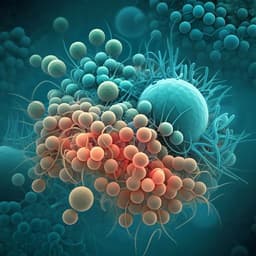
Veterinary Science
Effects of dietary n-3-PUFA supplementation, post-insemination plane of nutrition and pregnancy status on the endometrial transcriptome of beef heifers
C. Surlis, P. Cormican, et al.
This groundbreaking study explores how dietary n-3 polyunsaturated fatty acids can impact the endometrial transcriptome of beef heifers under varying nutritional conditions. Conducted by a team of researchers at Teagasc, this research reveals potential pathways to enhancing fertility by spotlighting genes crucial for embryonic development.
~3 min • Beginner • English
Related Publications
Explore these studies to deepen your understanding of the subject.







